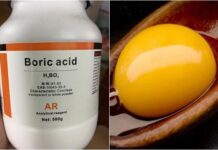Stainless Steel, commonly known as inox, is an alloy composed of metals such as Nickel, Chromium, Copper, Iron, Carbon, Manganese, Silicon, and more. This material stands out for its high durability, resistance to corrosion, and color retention, making it widely used in various everyday products.
The durability of inox depends on the mixture of metals like Chromium and Carbon. Inox exhibits excellent oxidation resistance when it contains a high percentage of Chromium. Currently, the most common types of inox are 201, 410, 304, 301, and 430.
Properties of Inox
Inox properties are categorized into 4 main groups, each with several subtypes:
- Austenitic: SUS 301, 304, 304L, 316, 316L, 321, 310s, etc.
- Ferritic: SUS 409, 410, 430, etc.
- Austenitic-Ferritic (Duplex): LDX 2101, SAF 2304, 2205, 253MA, etc.
- Martensitic: 420S45, 248SV, etc.
General properties of inox include:
| Alloy Group | Magnetic | Corrosion Resistance | Ductility | Heat Resistance |
| Austenit | No | High | Very High | Very High |
| Duplex | Yes | Very High | Medium | Low |
| Ferritic | Yes | Medium | Medium | High |
| Martensitic | Yes | Medium | Low | Low |
| Precipitation Hardening | Yes | Medium | Medium | Low |

Common Types of Inox

Comparing Common Inox Types
Inox 304
Inox 201
Inox 316
Inox 430
How to Distinguish Common Inox Types
Using Acid

Using Specialized Test Kits

Using Toilet Bowl Cleaner

Using a Magnet

Frequently Asked Questions About Inox
What is Stainless Steel?
What is Inox and Its Applications in Manufacturing?
Inox is a stainless steel alloy containing at least 10.5% chromium, resistant to corrosion and environmental factors. It is used in household items, medical equipment, food industry, and more.
Why Doesn’t Inox Rust?
Inox resists rust due to chromium forming an oxide layer on the surface, protecting the inner iron from corrosion.
How is Inox Processed?
Inox can be cut, ground, bent, welded, and polished into finished products.
What are the Main Inox Products in Manufacturing?
Inox is used to produce pipes, sheets, bars, wires, and household items like showerheads and sinks.
How to Polish Inox for a Shiny Surface?
A shiny inox surface is achieved through polishing and chromium plating.
Can Inox Withstand High Temperatures?
Yes, inox is used in chemical and metallurgical industries due to its heat resistance.
How is Inox Used in the Food Industry?
Inox is used for food storage equipment, cooking vessels, and water pipes due to its safety and durability.
Is Inox Highly Durable?
Yes, inox is highly durable, corrosion-resistant, and chemical-resistant, ensuring long-term structural integrity.
How to Clean and Maintain Inox Products?
Clean inox with warm water and soap. Store in a dry place, avoiding corrosive chemicals.
What Shapes Can Inox Take in Mechanical Engineering?
Inox can be shaped into round pipes, square pipes, solid bars, sheets, and more, depending on the application.
Why is Inox Ideal for Medical Products?
Inox is corrosion-resistant, easy to clean, and ideal for medical tools and equipment.
How to Weld Inox?
Use TIG or MIG welding to avoid surface rust.
Is Inox Durable in Seawater?
Yes, inox is highly resistant to seawater corrosion and is used in marine structures.
Why is Inox Called “Inox”?
“Inox” comes from the French “inoxydable,” meaning non-oxidizing, reflecting its corrosion resistance.
Can Inox Be Recycled?
Yes, inox can be recycled and reused for new products.
What are Common Inox Alloys?
SUS 304 and SUS 316 are popular, with chromium and nickel as main components.
Is Inox Used in Renewable Energy?
Yes, inox is used in solar and wind energy systems.
What are Inox’s Disadvantages?
Inox is more expensive than other steels and requires specialized processing.
Is Inox Used in Aerospace?
Yes, inox is used in aircraft and spacecraft components due to its durability and heat resistance.
What Makes Inox Unique in Manufacturing?
Inox stands out for its corrosion resistance, chemical resistance, and aesthetic appeal, making it ideal for various applications.
Expert in web design and development with over 15 years of experience. I’ve helped hundreds of businesses develop comprehensive website strategies for sustainable growth and profitability.

































